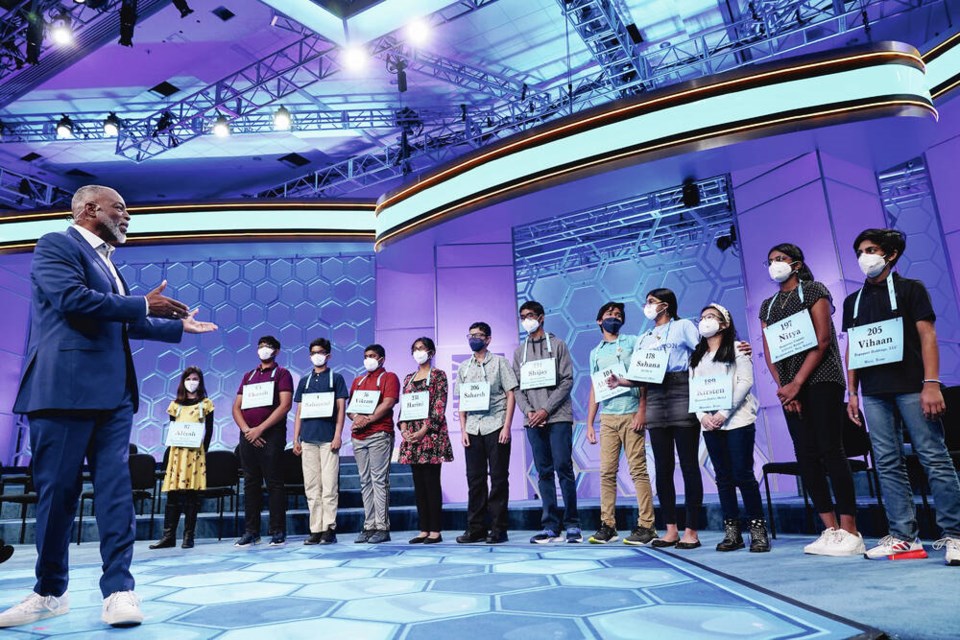As a newbie teacher of Grade 11 English in 1966, I was required to teach spelling.
I did this by introducing five new words each day and teaching them in context incrementally Monday through Thursday.
There would be a test on those 20 words each Friday as part of the lesson.
The state inspector who came to observe my lesson was critical of this system, saying: “Don’t you realize, Mr. Johnson, that if you persist with this system, by Friday they’ll get them all right?”
I never fully understood his point, but realized later that it probably had something to do with his devotion to distributing student results across a “normal” curve rather than teaching spelling.
Now, 58 years later, a different question confronts the teaching of spelling: Why teach spelling at all in the age of autocorrect?
So before we get into the details, let’s clear autocorrect off the table right (write? rite?) now before we have to apologize about an email we sent to “dead friend” having intended to write to “dear friend.”
As well as blunders like this, autocorrect struggles with contractions, words requiring apostrophes (changing were to we’re or they’re to there) and so on.
The B.C. Language Arts curriculum still requires spelling to be taught in grades 1-8. Children should be learning to “communicate using letters and words and applying some conventions of Canadian spelling, grammar and punctuation.”
But there’s a catch. Canadian spelling? According to Wikipedia: “Canadian spelling of the English language combines British and American conventions and adds some domestic idiosyncrasies. Those idiosyncrasies may be regional or even social but for many words American and British spelling are both acceptable.”
That doesn’t help much. Then there is a further challenge because spelling in English, no matter what the cultural source, is rife with homonyms and homophones.
Homonyms are words that share a spelling and pronunciation but have different meanings, as in these two uses of the word can: “can I help you?” and “here’s a can of beans.”
A homophone is a word that is pronounced the same as another word but differs in meaning, such as “red” and “read” or “flower” and flour.”
Why is English spelling such a mess? Probably because modern English has been influenced by several core languages, primarily Anglo-Saxon, Norman French (a dialect of Old French used in medieval Normandy), Latin and Greek.
The only way out of all this, if one wishes to appear literate, is to learn to spell by a combination of memory and word/context recognition, which is developed by reading — a lot. Research shows that great spellers are usually avid readers who commit a lot of words to memory.
In a paper presented to the U.S. National Academy of Education’s Committee on Teacher Education, Catherine Snow, professor of cognition and education at Harvard University, summarizes the importance of spelling for reading: “Spelling and reading build and rely on the same mental representation of a word. Knowing the spelling of a word makes the representation of it sturdy and accessible for fluent reading.”
Writing in Psychology Today, J. Richard Gentry argues “spelling knowledge is essential for the brain’s reading architecture,” adding that “cognitive science and neuroscience have clarified the critical role of spelling for reading.”
But what are the best ways to teach spelling, especially to younger children?
Karina Richlan, author and curriculum developer at PRIDE Reading Program, recommends using a structured literacy approach such as the Orton-Gillingham method, which uses all three learning channels: auditory, visual and kinesthetic.
According to Richlan, this means that students will learn to spell words by seeing them, hearing them and writing them. It is “structured and sequential,” she says.
Then there are those precocious kids who participate in Spelling Bee of Canada competitions.
As of 2022, more than 70,000 children had taken part.
Rather than just open the dictionary, prospective contestants study word lists, including the 4,000 words in the free official study guide provided. Some parents create their own word lists based on observing past bees.
Students must commit to learning the word lists primarily through studying by themselves, although it seems that parent support in the form of creating the right conditions for studying helps enormously.
Research also shows that studying and memorizing words while alone is a better predictor of performance in the national spelling bee than being quizzed by others, or just reading for pleasure.
But spelling bees are not without their critics. According to author Jarod Kintz, “Before Microsoft Word and Google, Spelling Bees had value, but now they are all superflewus.”
Geoff Johnson is a former superintendent of schools.
>>> To comment on this article, write a letter to the editor: [email protected]




